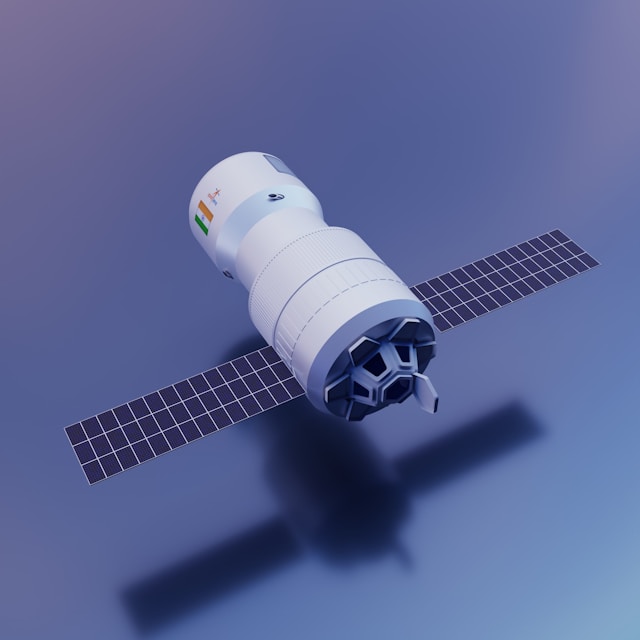Introduction
The Indian Space Research Organisation (ISRO) is renowned for its ambitious space missions and significant contributions to space science. One of its highly anticipated projects is the NISAR mission, which stands for NASA-ISRO Synthetic Aperture Radar. Initially slated for an earlier launch, the mission has been postponed to after February 2025. This delay has garnered considerable attention and curiosity within the scientific community and the public alike. In this article, we will explore the reasons behind this delay, its implications, and what it means for the future of space exploration.
What is the NISAR Mission?
Before delving into the reasons for the delay, it’s essential to understand what the NISAR mission entails.
Overview of the NISAR Mission
NISAR is a collaborative mission between NASA and ISRO aimed at deploying a synthetic aperture radar (SAR) satellite. The primary objective of this mission is to enhance our understanding of the Earth’s surface and its changes. The satellite will be equipped with advanced radar technology capable of providing detailed and accurate data on various Earth phenomena.
Goals of the Mission
- Earth Observation: To monitor changes in the Earth’s surface, including land subsidence, natural disasters, and vegetation growth.
- Climate Change Research: To study the impact of climate change on different regions of the planet.
- Disaster Management: To improve disaster response and management through precise data collection.
Reasons for the Postponement
The postponement of the NISAR mission to after February 2025 is influenced by several factors. Let’s examine the key reasons behind this delay.
1. Technical Challenges
One of the primary reasons for the delay is technical challenges related to the mission’s complex instrumentation.
Radar Technology Development
The synthetic aperture radar technology used in NISAR is highly advanced and requires precise calibration and testing. Any issues or setbacks in developing and refining this technology can lead to delays in the overall mission timeline.
Integration and Testing
The integration of the radar system with the spacecraft and subsequent testing are critical steps. Any technical problems encountered during these phases can affect the launch schedule.
2. Coordination Between NASA and ISRO
The NISAR mission is a joint venture between NASA and ISRO, and effective coordination between the two agencies is crucial.
Logistical Challenges
Coordinating between two space agencies involves logistical challenges, including aligning schedules, managing resources, and ensuring that both teams are synchronized in their efforts.
Collaborative Development
Both NASA and ISRO are working on various components of the mission. Delays in one component can affect the overall timeline, leading to a revised launch date.
3. Launch Vehicle Availability
The availability of suitable launch vehicles is another significant factor influencing the mission’s timeline.
Spacecraft Launch Schedules
ISRO’s launch vehicles, such as the GSLV Mk III, are used for deploying satellites into orbit. Scheduling and availability of these launch vehicles can impact the mission’s timing.
Priority of Other Missions
ISRO has a busy schedule of other space missions and projects. Prioritizing these missions and ensuring their successful completion can affect the timeline for the NISAR launch.
4. Budgetary and Administrative Considerations
Budgetary constraints and administrative issues can also contribute to delays.
Funding and Resource Allocation
Ensuring adequate funding and resources for a complex mission like NISAR is crucial. Any financial or administrative issues can lead to adjustments in the mission timeline.
Regulatory Approvals
Obtaining necessary regulatory approvals and clearances is a critical step in preparing for a space launch. Delays in these approvals can affect the overall schedule.
Implications of the Delay
The delay in the NISAR mission has several implications for both the scientific community and space exploration efforts.
Impact on Earth Science Research
The NISAR mission is expected to provide valuable data on Earth’s surface changes and climate phenomena. A delay in the mission will postpone the availability of this crucial data, affecting ongoing research and projects.
Effect on Disaster Management
The mission’s goal to improve disaster management through precise data collection will be delayed. This could impact the ability to respond effectively to natural disasters in the interim.
Collaborative Space Research
The delay highlights the complexities involved in international space collaborations. It underscores the need for effective coordination and planning in joint missions.
Future Prospects
Despite the delay, the NISAR mission remains a significant milestone in space research. Here’s what we can expect in the future.
Advancements in Radar Technology
The additional time will allow for further refinement and advancement in radar technology, ensuring that the mission’s objectives are met with the highest accuracy.
Enhanced Data Collection
Once launched, the NISAR mission will provide a wealth of data that will contribute to a better understanding of Earth’s dynamics and support various scientific and environmental initiatives.
Strengthened International Collaboration
The mission will strengthen collaborative efforts between NASA and ISRO, paving the way for future joint projects and advancements in space research.
Conclusion
The postponement of the NISAR mission to after February 2025 is a result of technical, logistical, and administrative challenges. While the delay is unfortunate, it provides an opportunity for further refinement and ensures that the mission’s objectives will be achieved with the highest precision. The NISAR mission remains a significant endeavor with the potential to greatly impact our understanding of Earth and enhance disaster management and climate research.
FAQs
1. What is the new expected launch date for the NISAR mission?
The NISAR mission is expected to launch after February 2025. The exact date will be confirmed as preparations continue.
2. How will the delay affect ongoing Earth science research?
The delay will postpone the availability of crucial data, affecting research and projects related to Earth’s surface changes and climate phenomena.
3. What are the main objectives of the NISAR mission?
The main objectives of the NISAR mission are to monitor Earth’s surface changes, study climate change impacts, and improve disaster management through advanced radar technology.
4. How does the collaboration between NASA and ISRO impact the mission?
The collaboration between NASA and ISRO involves coordinating resources, technology, and schedules. Effective collaboration is essential for the successful execution of the mission.
5. What are the key technical challenges faced by the NISAR mission?
Key technical challenges include the development and calibration of advanced radar technology, integration with the spacecraft, and testing to ensure mission success.
I hope you are having a wonderful day!
Thank you so much for your kindness and support!


